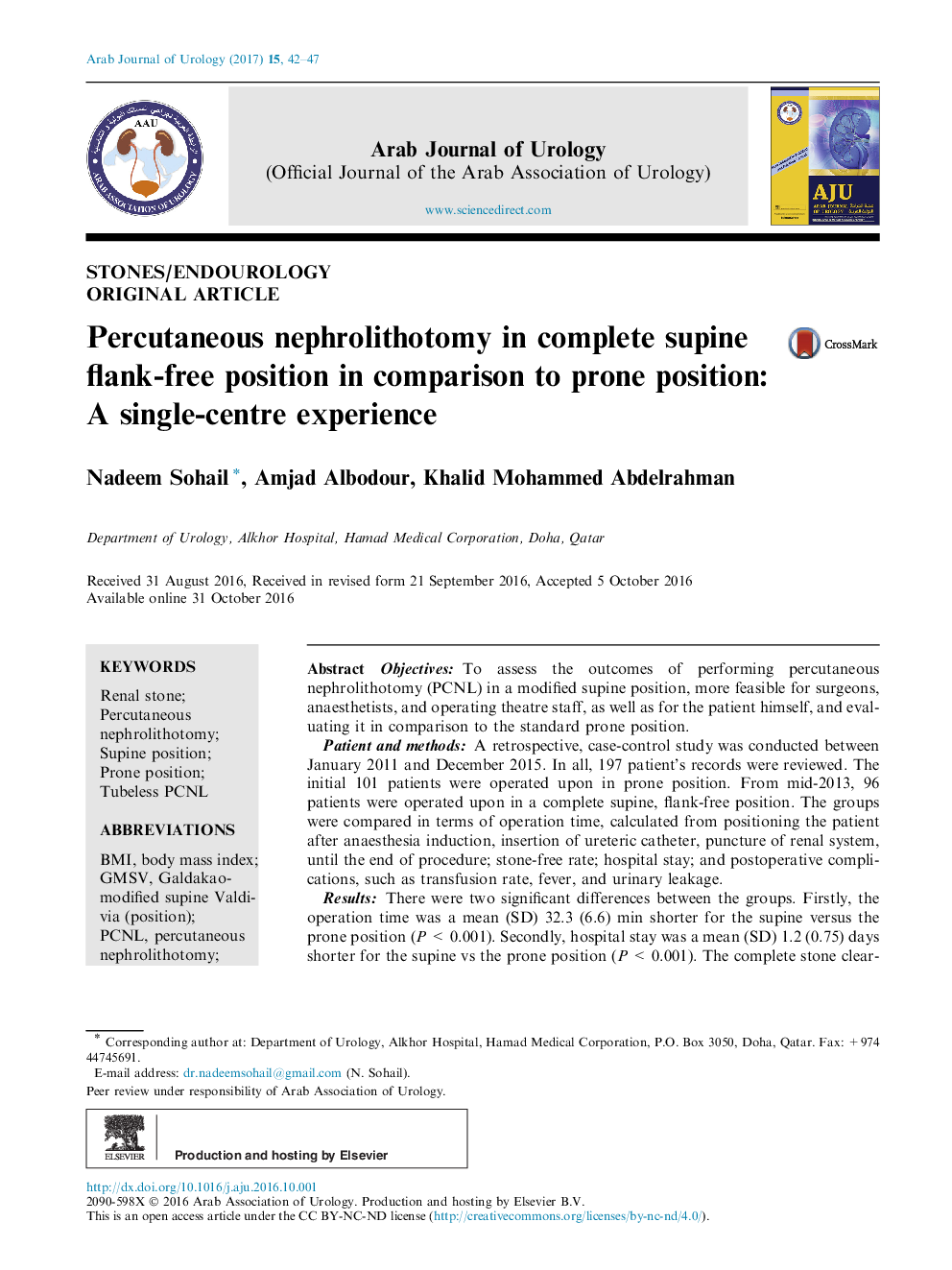| Article ID | Journal | Published Year | Pages | File Type |
|---|---|---|---|---|
| 5729588 | Arab Journal of Urology | 2017 | 6 Pages |
ObjectivesTo assess the outcomes of performing percutaneous nephrolithotomy (PCNL) in a modified supine position, more feasible for surgeons, anaesthetists, and operating theatre staff, as well as for the patient himself, and evaluating it in comparison to the standard prone position.Patient and methodsA retrospective, case-control study was conducted between January 2011 and December 2015. In all, 197 patient's records were reviewed. The initial 101 patients were operated upon in prone position. From mid-2013, 96 patients were operated upon in a complete supine, flank-free position. The groups were compared in terms of operation time, calculated from positioning the patient after anaesthesia induction, insertion of ureteric catheter, puncture of renal system, until the end of procedure; stone-free rate; hospital stay; and postoperative complications, such as transfusion rate, fever, and urinary leakage.ResultsThere were two significant differences between the groups. Firstly, the operation time was a mean (SD) 32.3 (6.6) min shorter for the supine versus the prone position (PÂ <Â 0.001). Secondly, hospital stay was a mean (SD) 1.2 (0.75) days shorter for the supine vs the prone position (PÂ <Â 0.001). The complete stone clearance rate (85.4% for supine vs 79.2% for prone; PÂ =Â 0.2) and postoperative complications (7.3% for supine vs 17.8% for prone; PÂ =Â 0.02) were comparable in both groups.ConclusionSupine PCNL is a feasible procedure with similar outcomes in terms of stone-free rate as well as postoperative complications, to the standard prone PCNL. It reduces unnecessary delay that occurs during change of position resulting in significant shortening of the total operation time and surgeons can perform supine PCNL whilst sitting.
